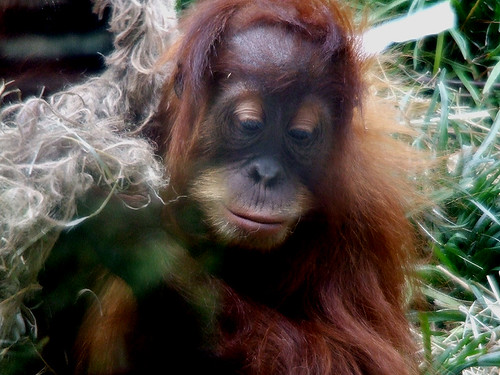 | |
| photo by Annie Chartrand |
British psychoanalyst D.W. Winnicott was an amazingly close observer of child behaviour. His is the only voice in psychology I know that has ever made mention of the way babies self-comfort using hair like fibres. In Playing and Reality (1971) Winnicott describes how babies may pluck wool strands from a blanket and use them to caress the mouth area and sometimes even swallow the strands too.
Winnicott called this transitional behaviour - when an object is needed to soothe anxiety at a time when a transition from one state to another (such as from waking to sleeping) is occurring. At such a time the baby may feel lonely or depressed and a specific object or behaviour helps offset this. On this basis thumb sucking may also included too as a way of helping a child cope with the transition of having the mother present to her disappearance from view.
It is odd to me that Winnicott's observation has not really been fully followed up and related to hair pulling in later childhood. The idea that this behaviour may link to how babies self-comfort could imply hair pulling is an innate behavioural pattern of the human species, or at very least a throwback to a behaviour learned in the early months of life.
For Winnicott, a baby's adoption of a bit of wool from a blanket or other material is a pattern (think of Linus in Charlie Brown) which can persist into late childhood or even adult life and is part of normal development. This is speculation on my part, but could hair pulling disorder be another part of the same spectrum? In this sense, the child is using a part of his own body (a part that resembles a woollen fibre, which is detachable and can be owned or possessed in its own right) to provide material comfort.
Winncott's theory of transitional behaviour is interesting. He believed that self soothing took place when an object was needed to bridge the gap between external reality and the inner physiological need of the child. Or in other words, to assist adaptation to the world a child might need an object in order to facilitate adjustment to an otherwise challenging situation, such as to sleeping in a room by itself. Applied to hair pulling, it is easy to imagine that a child unable to cope with his environment may turn to the body as a source of comfort where lack of social support was available.
But does this help explain all facets of hair pulling? What about hair root eating? Well, hair root eating does meet the oral need of sucking which babies do. But why pull hair when one could use a blanket instead? Maybe the child has not been able to form a successful attachment to physical objects or possessions in its environment and in this way hair pulling possibly signals a mode material deprivation or a disturbance to the capacity for 'ownership' (self-identification with the world around it).
Personally, I think Winnicott's observations are extremely important and helpful in gaining insight into hair pulling behaviour and into other forms of self-directed actions too. Maybe a sense of comfort from hair or hair-like fibres goes all the way back to our primate origins when mothers were hairy too.
References:
Winnicott, D.W., The Family and Individual Development (Routledge, 2006)
Winnicott D.W., Playing and Reality (Tavistock, 1971)
No comments:
Post a Comment
Please leave your comment below: